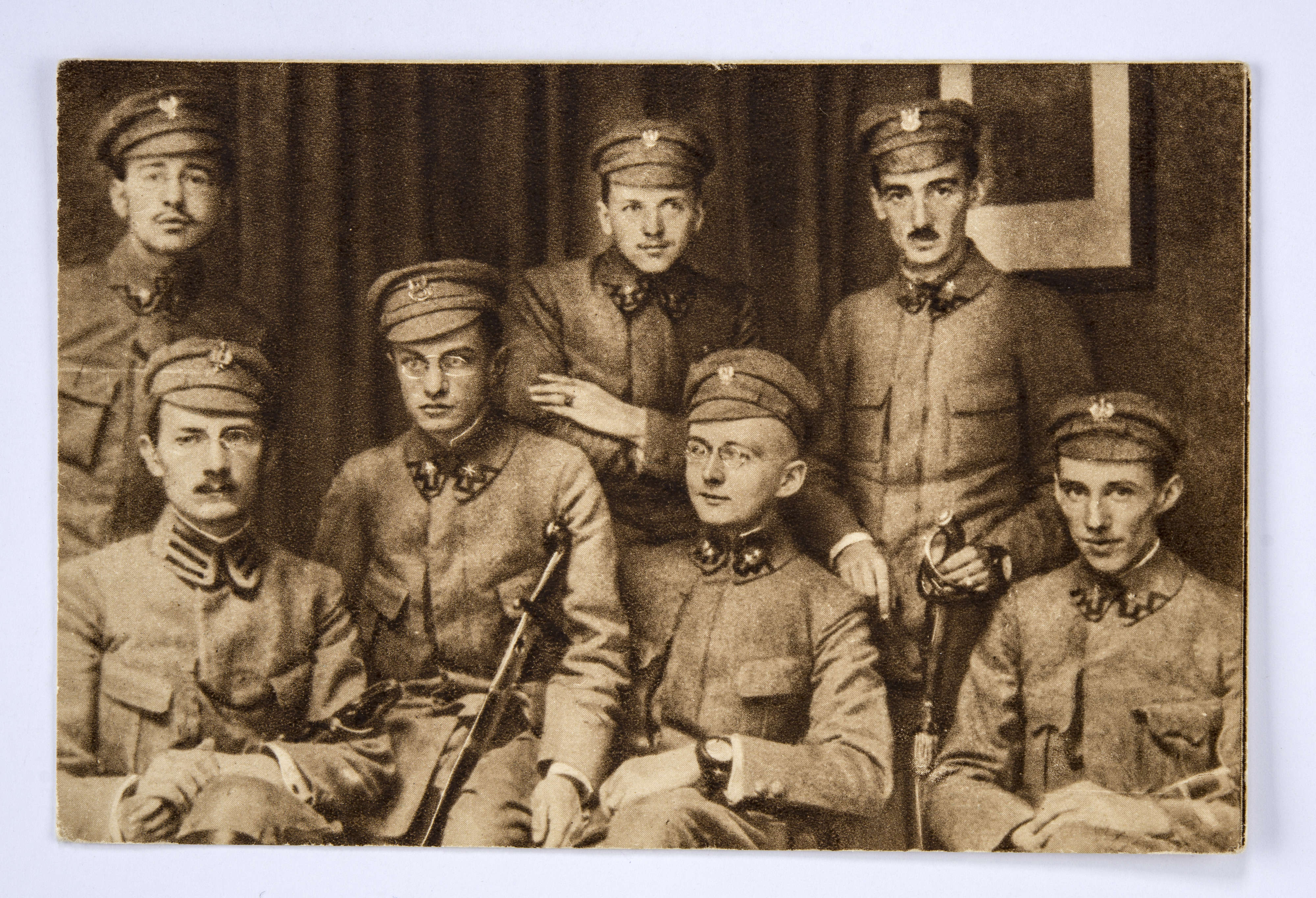
The recent passing of Tran Trong Duyet, the chief warden at Hoa Lo Prison—infamously nicknamed the ‘Hanoi Hilton’ by its American detainees—at the age of 92 marks the end of a life deeply intertwined with one of the most contentious chapters of the Vietnam War and the remarkable story of Senator John McCain. Duyet’s death in Haiphong, Vietnam, on Wednesday, August 27, 2025, from lymphoma, brings into sharp focus the complex, often contradictory narratives that continue to define the wartime experiences of both nations. His passing prompts a re-examination of a period that remains “contested, blurred perhaps by competing traumas of war and nationalist narratives,” as noted in the context surrounding the prison that now stands as one of Hanoi’s most popular tourist spots.
Duyet played a role of significant, yet disputed, importance in both the broader conflict and the personal biography of John McCain, the Arizona senator who later became the Republican presidential candidate in 2008. The ‘Hanoi Hilton’ was the crucible where their lives intersected, a place McCain described as a “hellhole run by captors who he said were ‘cruel and sadistic people.’” This stark assessment stood in direct opposition to Duyet’s persistent denials of torture, his insistence on humane treatment, and his later, surprising endorsement of McCain’s presidential bid, shouting “John McCain! My friend! Victory!” to a reporter in 2008.
The enduring memory of the ‘Hanoi Hilton’ is thus not monolithic but a tapestry woven from divergent experiences and perspectives. While many American prisoners detailed a grim reality of beatings, starvation, and solitary confinement from 1964 until their release in 1973, Duyet maintained a counter-narrative of care and respect. This article delves into the life and legacy of Tran Trong Duyet, exploring his background, his stewardship of the prison, the harrowing ordeal of John McCain, and the profound, often conflicting, interpretations of history that continue to shape the memory of the Vietnam War.
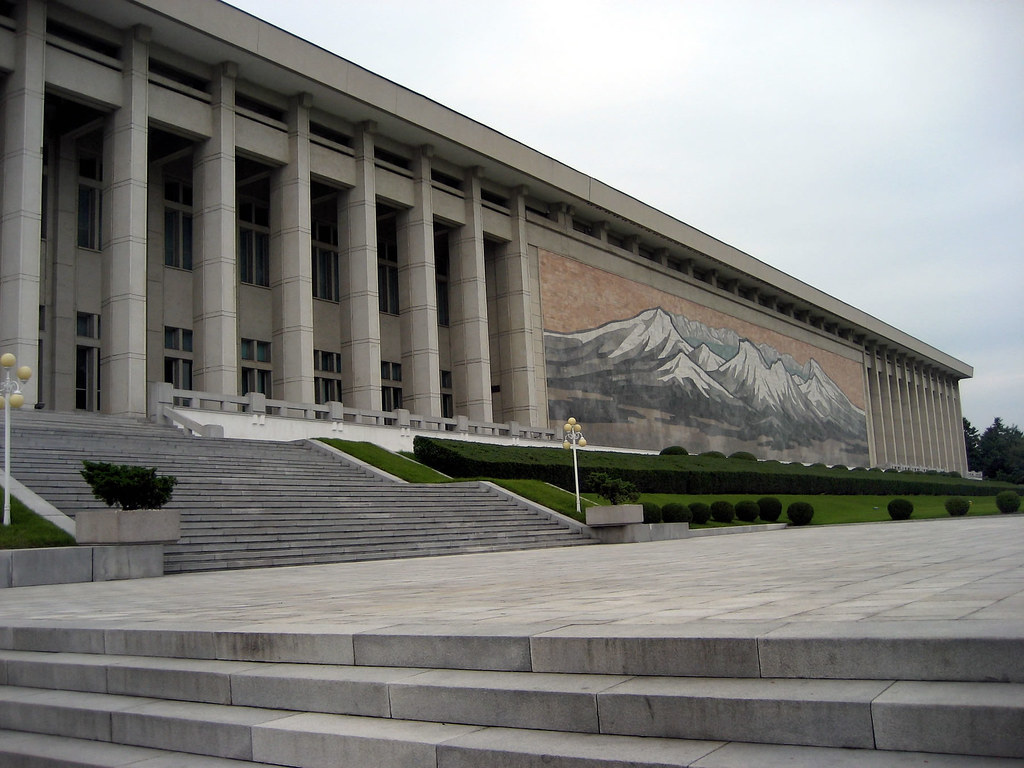
1. **Tran Trong Duyet’s Early Life and Revolutionary Roots** Tran Trong Duyet was born in 1933 in Thai Binh, a region nestled in the Red River Delta around Hanoi, into a large intellectual family. His father, a respected Confucian scholar and teacher, instilled in his children a deep sense of discipline and perseverance, traits that Duyet’s daughter, Tran Hai Yen, later noted he always imparted to his own children and grandchildren. The family’s intellectual background was complemented by a strong revolutionary spirit, as five of his eight siblings, all sons, actively participated in Vietnam’s earlier war for independence against French colonial forces.
The personal impact of this struggle profoundly shaped Duyet’s moral compass. He recounted that one reason he never resorted to torture at Hoa Lo was his profound recollection of his mother’s immense grief. This sorrow was caused by the French execution of one of his brothers directly at the entrance of their village. This harrowing family experience served as a powerful, lifelong reminder of the brutal human cost of conflict and the importance of humane conduct, even towards adversaries.
Duyet formally joined Ho Chi Minh’s resistance forces in 1949, marking the beginning of his military career. A year later, he became a soldier himself, actively participating in combat operations against French colonial forces during the liberation of Thai Binh. His early military service demonstrated his dedication to the cause of Vietnamese independence and laid the groundwork for his eventual rise within the military and political structure.
Following the restoration of peace in North Vietnam in 1954, Duyet continued his education and training. He attended the Military Command School of the Tả Ngân Military Region and was subsequently assigned to Regiment 50 of that region. This period of study and practical application further developed his leadership and strategic skills, preparing him for increasingly complex roles within the Vietnamese military hierarchy.
Military equipment: Lê Văn Duyệt
Name: Lê Văn Duyệt,黎文悅
Alt: A golden-coloured statue of a man in a gown on a seat with a sword on his knees. In front there is a polished wooden table with goldleaf and a blue and white porcelain vase with yellow flowers. Behind him is a wooden altar with lights and incense holders. The altar has the same design as the table. The wall is cream-coloured.
Caption: Bronze statue of Lê Văn Duyệt in his tomb
BirthDate: 1763 or 1764
DeathDate: Mon Jul 30 1832 00:00:00 GMT-0752 (Pacific Daylight Time)
Placeofburial: Tomb of Lê Văn Duyệt,Ho Chi Minh City
BirthPlace: :vi:Hòa Khánh, Cái Bè
DeathPlace: Gia Định Province
Allegiance: Nguyễn lords,Nguyễn dynasty
Serviceyears: 1789–1832
Rank: General
Battles: Naval Battle of Thi Nai (1801),Battle of Quảng Nghĩa (1803),Cambodian rebellion (1811–1812),Campaign against Đá Vách (1816–1817),Cambodian rebellion (1820)
Categories: 1760s births, 1832 deaths, All articles with dead external links, Articles containing Thai-language text, Articles with dead external links from March 2020
Summary: Lê Văn Duyệt (1763 or 1764 – 30 July 1832) was a Vietnamese general who helped Nguyễn Ánh—the future Emperor Gia Long—put down the Tây Sơn wars, unify Vietnam and establish the Nguyễn dynasty. After the Nguyễn came to power in 1802, Duyệt became a high-ranking mandarin, serving under the first two Nguyễn emperors Gia Long and Minh Mạng.
Born into a family of peasants near Tiền Giang, Duyệt joined Prince Nguyễn Ánh in fighting the Tây Sơn wars. Because of Duyệt’s military ability, he quickly rose through the ranks of the Nguyễn army and became a marshal when the Tây Sơn-Nguyễn war ended. After the foundation of the Nguyễn dynasty, Duyệt served as a high-ranking mandarin and, later, viceroy of the southern part of Vietnam, ruling from Gia Định (modern-day Saigon).
His governance greatly stabilized and helped develop the Nam Bo region, turning it into a wealthy and peaceful region. In addition, Duyệt opposed Emperor Minh Mạng’s ascension and defended Christian missionaries and converts from the emperor’s isolationist and Confucian policies. These attitudes brought Duyệt into conflict with Minh Mạng and led to the posthumous desecration of Duyệt’s tomb, which provoked his adopted son Lê Văn Khôi to revolt against the court. Later, Emperors Thiệu Trị and Tự Đức (son and grandson) of Minh Mạng, rehabilitated Duyệt and restored his tomb.
Get more information about: Lê Văn Duyệt

2. **Ascent to Warden of Hoa Lo Prison** Between 1963 and 1965, Tran Trong Duyet served as a political instructor at the Anti-Aircraft Artillery Officer School, a role that combined his military duties with ideological education. During this time, he also took part in operations in Quảng Bình and Vĩnh Linh, demonstrating his continued engagement in active military service. These experiences provided him with a comprehensive understanding of both the practicalities of combat and the political dimensions of the ongoing conflict.
Subsequently, from June 1966 to October 1967, Duyet shifted his focus to the realm of psychological operations, working as an editor for broadcasts transmitted by Voice of Vietnam. This role placed him at the heart of the propaganda war, where shaping public perception and morale was as crucial as battlefield victories. His work in radio propaganda programs showcased his ability to communicate strategically and influence narratives, a skill that would later prove vital in his role at Hoa Lo.
It was in November 1967 that Tran Trong Duyet arrived at Hoa Lo Prison, just a few months after John McCain’s plane was shot down over Hanoi. He quickly assumed the critical position of chief warden, a responsibility he held for an extended period, from 1967 until March 1973. This timeframe encompassed the majority of the American POWs’ captivity, including the entirety of John McCain’s five-and-a-half-year incarceration.
In photographs from that era, Duyet appeared “bookish, with wire-rimmed glasses,” an image that belied the immense pressure and responsibility of his role. Addressing American prisoners before their release in 1973, he was captured wearing a military cap and holding a book, an image that perhaps underscored his intellectual background and his official capacity as a state representative rather than a mere jailer. He was responsible for managing a select group of mostly pilots, including notable prisoners like John McCain and the West German nurse Monika Schwinn.
Military equipment: Operation Thunderhead
Categories: All articles needing additional references, Armed forces diving, Articles needing additional references from January 2013, Articles with short description, Battles and operations of the Vietnam War in 1972
Summary: Operation Thunderhead was a highly classified combat mission conducted by U.S. Navy SEAL Team One and Underwater Demolition Team 11 (UDT-11) in 1972. The mission was conducted off the coast of North Vietnam during the Vietnam War to rescue two U.S. airmen said to be escaping from a prisoner of war prison in Hanoi. The prisoners, including Air Force Colonel John A. Dramesi were planning to steal a boat and travel down the Red River to the Gulf of Tonkin.
Lieutenant Melvin Spence Dry was killed on the mission. He was the last SEAL lost during the Vietnam War. His father, retired Navy Captain Melvin H. Dry, spent the rest of his life trying to learn the circumstances surrounding his son’s death. The details, however, were long shrouded in secrecy.
Get more information about: Operation Thunderhead

3. **The Contested Narrative of Hoa Lo Prison** The history of Hoa Lo Prison, now a popular tourist attraction in Hanoi, remains a deeply contested space, embodying the clashing perspectives and enduring traumas of the Vietnam War. Tran Trong Duyet’s role as chief warden during the captivity of John McCain and other American pilots is central to this dispute, becoming a focal point where competing historical narratives intersect and diverge dramatically. What transpired within its walls from 1964 to 1973 continues to be debated, blurred by the intense emotional impact of the conflict on both sides.
For Senator John McCain, who suffered immensely there, Hoa Lo was unequivocally a “hellhole run by captors who he said were ‘cruel and sadistic people.’” His account, and that of many other American prisoners, painted a grim picture of systematic abuse, detailing widespread instances of beatings, starvation, and prolonged solitary confinement. These collective testimonies vividly depict a period of profound suffering and psychological torment endured by the American POWs.
However, Tran Trong Duyet consistently presented an entirely different reality. In interviews conducted after the war, he adamantly denied that any prisoners were tortured under his watch. He maintained that the American captives, whom he managed, were treated far better than enemy combatants would have been anywhere else in the world during a conflict. This assertion stands as a direct challenge to the American narrative, highlighting the profound chasm in memory and interpretation between the former adversaries.
The dispute over what happened at Hoa Lo is not merely historical but deeply political, reflecting the broader ideological struggle of the Vietnam War itself. Both sides, seeking to win “hearts and minds,” invested heavily in shaping the narrative around prisoner treatment. This fundamental disagreement over the facts continues to color the legacy of the prison, making it a powerful symbol of the unresolved tensions and differing perspectives that persist decades after the war’s conclusion.
Military equipment: Vietnam War
Conflict: Vietnam War
Partof: Indochina Wars
Border: infobox
Perrow: 2/2/2
TotalWidth: 300
Date: snd}}30 April 1975,({{Age in years, months, and days
Place: South Vietnam,North Vietnam,Cambodia (1953–1970),Kingdom of Laos,South China Sea,Gulf of Thailand
Territory: North Vietnam
Result: North Vietnam
Combatant2: Flag,[object Object],Flagcountry,Flag,Flag,Flagcountry,Flagcountry,Flagcountry,[object Object],Flagcountry,Flag,Flagcountry
Combatant1: Flag,Provisional Revolutionary Government of the Republic of South Vietnam,Pathet Lao,Khmer Rouge,GRUNK,Flag,[object Object],[object Object]
Strength1: Flagdeco,Flagdeco,[object Object],[object Object],Flagdeco,Flagdeco,[object Object]
Strength2: Flagdeco,[object Object],[object Object],Hmong people,Flagdeco,[object Object],Flagdeco,[object Object],Flagdeco,Flagdeco
Commander1: Flagicon,Lê Duẩn,Võ Nguyên Giáp,Phạm Văn Đồng,Trần Văn Trà,Leaders of the Vietnam War#Communist forces
Commander2: Flagicon,Nguyễn Văn Thiệu,Nguyễn Cao Kỳ,Dwight D. Eisenhower,John F. Kennedy,Lyndon B. Johnson,Richard Nixon,Robert McNamara,Melvin Laird,William Westmoreland,Creighton Abrams,Leaders of the Vietnam War#Anti-communist forces
Casualties1: [object Object],[object Object],Flagicon,[object Object],Flagu,GRUNK
Casualties2: Flagu,[object Object],[object Object],[object Object],Flagdeco,Flagu,[object Object]
Casualties3: Vietnamese civilian dead: 405,000–2,000,000,Vietnamese total dead: 966,000–3,010,000,Cambodian Civil War dead: 275,000–310,000,Laotian Civil War dead: 20,000–62,000,Non-Indochinese military dead: 65,494,Total dead: 1,326,494–3,447,494,Vietnam War casualties
Notes: flagicon image,FULRO
Campaignbox: Campaignbox Indochina Wars
Campaignbox Vietnam War
Campaignbox Vietnam War massacres
Categories: 1950s conflicts, 1950s in Vietnam, 1960s conflicts, 1960s in Vietnam, 1970s conflicts
Summary: The Vietnam War (1 November 1955 – 30 April 1975) was an armed conflict in Vietnam, Laos, and Cambodia fought between North Vietnam (Democratic Republic of Vietnam) and South Vietnam (Republic of Vietnam) and their allies. North Vietnam was supported by the Soviet Union and China, while South Vietnam was supported by the United States and other anti-communist nations. The conflict was the second of the Indochina wars and a proxy war of the Cold War between the Soviet Union and US. The Vietnam War was one of the postcolonial wars of national liberation, a theater in the Cold War, and a civil war, with civil warfare a defining feature from the outset. Direct US military involvement escalated from 1965 until its withdrawal in 1973. The fighting spilled into the Laotian and Cambodian Civil Wars, which ended with all three countries becoming communist in 1975.
After the defeat of the French Union in the First Indochina War that began in 1946, Vietnam gained independence in the 1954 Geneva Conference but was divided in two at the 17th parallel: the Viet Minh, led by Ho Chi Minh, took control of North Vietnam, while the US assumed financial and military support for South Vietnam, led by Ngo Dinh Diem. The North Vietnamese supplied and directed the Viet Cong (VC), a common front of dissidents in the south which intensified a guerrilla war from 1957. In 1958, North Vietnam invaded Laos, establishing the Ho Chi Minh trail to supply the VC. By 1963, the north had covertly sent 40,000 soldiers of its People’s Army of Vietnam (PAVN), armed with Soviet and Chinese weapons, to fight in the insurgency in the south. President John F. Kennedy increased US involvement from 900 military advisors in 1960 to 16,000 in 1963 and sent more aid to the Army of the Republic of Vietnam (ARVN), which failed to produce results. In 1963, Diem was killed in a US-backed military coup, which added to the south’s instability.
Following the Gulf of Tonkin incident in 1964, the US Congress passed a resolution that gave President Lyndon B. Johnson authority to increase military presence without declaring war. Johnson launched a bombing campaign of the north and sent combat troops, dramatically increasing deployment to 184,000 by 1966, and 536,000 by 1969. US forces relied on air supremacy and overwhelming firepower to conduct search and destroy operations in rural areas. In 1968, North Vietnam launched the Tet Offensive, which was a tactical defeat but convinced many Americans the war could not be won. Johnson’s successor, Richard Nixon, began “Vietnamization” from 1969, which saw the conflict fought by an expanded ARVN while US forces withdrew. The 1970 Cambodian coup d’état resulted in a PAVN invasion and US–ARVN counter-invasion, escalating its civil war. US troops had mostly withdrawn from Vietnam by 1972, and the 1973 Paris Peace Accords saw the rest leave. The accords were broken and fighting continued until the 1975 spring offensive and fall of Saigon to the PAVN, marking the war’s end. North and South Vietnam were reunified in 1976.
The war exacted an enormous cost: estimates of Vietnamese soldiers and civilians killed range from 970,000 to 3 million. Some 275,000–310,000 Cambodians, 20,000–62,000 Laotians, and 58,220 US service members died. Its end would precipitate the Vietnamese boat people and the larger Indochina refugee crisis, which saw millions leave Indochina, of which about 250,000 perished at sea. 20% of South Vietnam’s jungle was sprayed with toxic herbicides, which led to significant health problems. The Khmer Rouge carried out the Cambodian genocide, and the Cambodian–Vietnamese War began in 1978. In response, China invaded Vietnam, with border conflicts lasting until 1991. Within the US, the war gave rise to Vietnam syndrome, an aversion to American overseas military involvement, which, with the Watergate scandal, contributed to the crisis of confidence that affected America throughout the 1970s.
Get more information about: Vietnam War
Read more about: Divergent Paths: How ICE Tactics Are Reshaping Immigration Enforcement Across America’s Red and Blue Divide
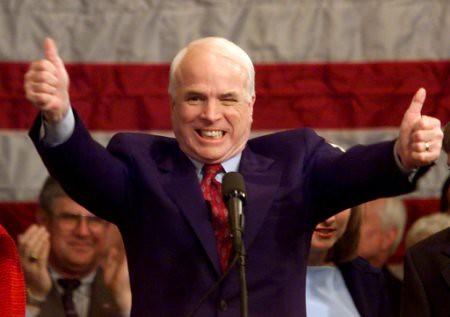
4. **John McCain’s Ordeal and Unwavering Resistance** John McCain’s captivity at Hoa Lo Prison began in October 1967, when his A-4 Skyhawk divebomber was shot down over Hanoi while he was part of a 20-plane mission to bomb a power plant. The crash resulted in severe injuries, including broken arms and a shattered leg, fundamentally altering the trajectory of his life. He landed by parachute near Truc Bach lake, where a monument now stands in his honor, marking the beginning of an arduous five-and-a-half-year ordeal in North Vietnamese captivity.
During his time at Hoa Lo, McCain endured unimaginable hardship and brutality. He was subjected to solitary confinement for two years, a period he later described as putting him in a “pretty surly mood” and forcing him to holler insults at guards to ward off depression. Beyond the isolation, he experienced frequent beatings and was sometimes suspended by ropes that lashed his arms behind him. These tortures were so severe that he attempted suicide twice, highlighting the extreme psychological and physical duress he faced, and his weight fell to a mere 105 pounds.
McCain’s captors quickly recognized his value as a propaganda asset, learning that his father was an admiral in charge of the United States Pacific Command, which earned him the nickname “Crown Prince.” Despite this, and the offer of early release, McCain famously refused, choosing to uphold his honor and avoid giving the enemy a significant propaganda coup. This principled stand, risking further suffering, demonstrated his profound commitment to his fellow prisoners and his military code.
The torture McCain endured left him with lifelong physical effects, notably the inability to raise his arms above his head and a slight limp. These injuries served as constant reminders of his time in captivity and profoundly shaped his later political career. His personal experience of “enhanced interrogation techniques” led him to become a vocal opponent of practices like waterboarding during his time in Congress, underscoring the enduring impact of Hoa Lo on his moral and ethical framework.
Military equipment: DDG 51 Arleigh Burke Class Destroyer
Manufacturer: Bath Iron Works, Huntington Ingalls Industries
The Arleigh Burke class employs all-steel construction and is comprised of three separate variants or “Flights”: DDG 51-71 represent the original design and are designated Flight I ships; DDG 72-78 are Flight II ships; DDG 79 and Follow ships are built or are being built to the Flight IIA design. The Flight III baseline is planned for the second ship in FY16.
A DDG modernization program is underway to provide a comprehensive mid-life upgrade that will ensure the DDG 51 class will maintain mission relevance and remain an integral part of the Navy’s Sea Power 21 Plan. The modernization changes are also being introduced to new construction ships to increase the baseline capabilities of the newest ships in the class, and to provide commonality between new construction ships and modernized in-service ships. The goal of the DDG modernization effort is to reduce workload requirements and increase war fighting capabilities while reducing total ownership cost to the Navy. In-service ships can be modernized by two distinct packages: Combat Systems (C/S) and Hull, Mechanical, and Electrical (HM&E) upgrades.
Additional upgrades include: Cooperative Engagement Capability (CEC), Evolved Sea Sparrow Missile (ESSM), CIWS Blk 1B, SEWIP, and NULKA. The Arleigh Burke-class MK-41 Vertical Launching System (VLS) will be upgraded to support SM-3 and newer variants of the SM missile family. Throughout their expected service life, DDG 51 destroyers will continue to provide multi-mission offensive and defensive capabilities with the added benefit of sea-based protection from the ballistic missile threat.
Categories: Destroyers, Navy Equipment, Navy Ships and Submarines, Ships and Submarines
Get more information about: DDG 51 Arleigh Burke Class Destroyer

5. **Duyet’s Counter-Narrative of Humane Treatment** In stark contrast to the harrowing accounts of torture from American POWs, Tran Trong Duyet adamantly maintained that under his watch, prisoners at Hoa Lo received humane treatment. He consistently denied any accusations of torture, asserting instead that the American captives were afforded conditions superior to what might be expected during wartime, and even, in some respects, better than those of their guards during a period of scarcity. This narrative presents a fundamentally different picture of daily life within the prison walls.
As evidence, Duyet frequently referenced photographs depicting American prisoners participating in basketball games in the prison yard or sharing dinners with their captors. Some of these images are now displayed on the walls of the museum that occupies part of the former prison, while others he kept at home in a small, cell-like room filled with wartime mementos. These photos, in Duyet’s view, served as tangible proof of the respectful environment he claimed to have fostered.
Further supporting Duyet’s perspective were accounts from certain detainees, which painted a more nuanced picture. Monika Schwinn, a detained German nurse whom Duyet later stated he had befriended—even buying her underwear—told a reporter that she had kept a cat at Hoa Lo and received sufficient food and water. Similarly, Walter Wilber, the commander of a U.S. Navy fighter squadron, appeared on “60 Minutes” shortly after his release and publicly stated that he had not been beaten or tortured during his nearly five years at the prison.
Duyet also claimed that he punished any of his fellow guards who stepped out of line, reinforcing his assertion of strict discipline and adherence to a code of conduct that precluded mistreatment. In an interview, he stated, “There was no torture, Vietnamese people saved him.” He held up photographs of American POWs and, more recently, himself posing with U.S. officials at his home in Hai Phong as testament to his conviction regarding the treatment of prisoners and his role in their ultimate healthy and safe return, an objective he felt he had achieved.
Military equipment: F-16 Fighting Falcon
Contractor: Lockheed Martin Corp.
Service: USAF
Armament: M-61A1 20mm cannon; external stations can carry up to six air-to-air missiles, conventional air-to-air and air-to-surface munitions and electronic countermeasure pods
Power Plant: F-16C/D: one Pratt and Whitney F100-PW-200/220/229 or General Electric F110-GE-100/129
Speed: 1,500 mph (Mach 2)
Range: 2,002 miles
The F-16 fighting falcon was built under an unusual agreement creating a consortium between the United States and four NATO countries: Belgium, Denmark, the Netherlands and Norway. These countries jointly produced with the United States an initial 348 F-16s for their air forces. Final airframe assembly lines were located in Belgium and the Netherlands. The consortium’s F-16s are assembled from components manufactured in all five countries. Belgium also provides final assembly of the F100 engine used in the European F-16s. Recently, Portugal joined the consortium. The long-term benefits of this program will be technology transfer among the nations producing the F-16, and a common-use aircraft for NATO nations. This program increases the supply and availability of repair parts in Europe and improves the F-16’s combat readiness.
Categories: Military Aircraft, Air Force Aircraft, Air Force Attack Aircraft, Air Force Fighters, Attack Aircraft
Get more information about: F-16 Fighting Falcon
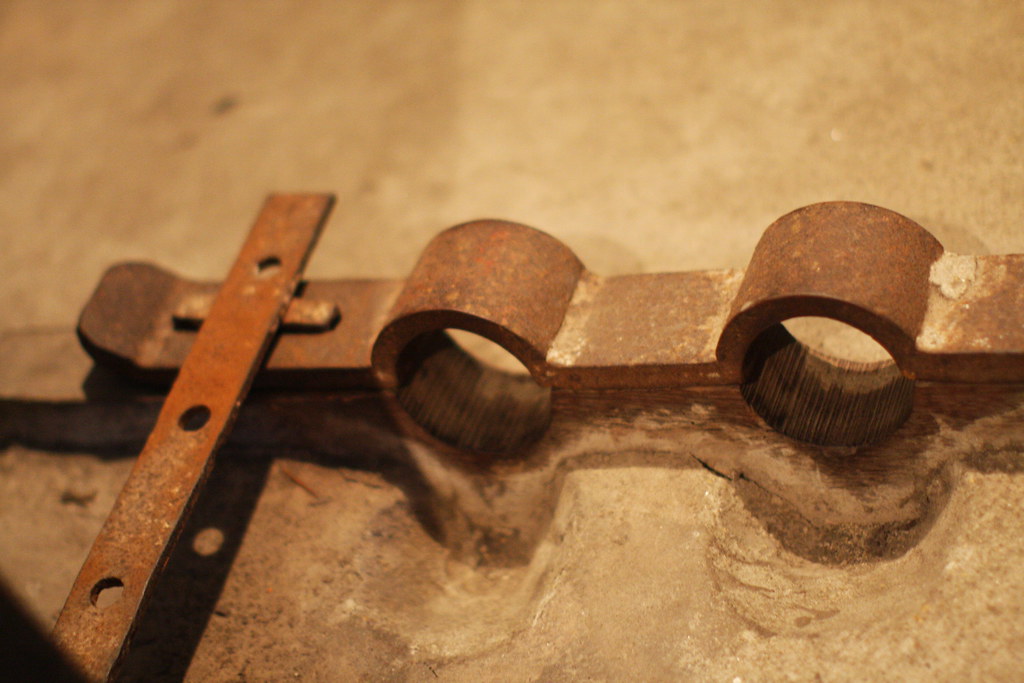
6. **The Psychology of Captivity: Resistance and Adaptation** The experience of captivity at Hoa Lo Prison was a profound psychological battleground for American POWs, demanding immense mental fortitude and ingenuity to endure. John McCain, for instance, described his initial solitary confinement as inducing a “pretty surly mood,” a testament to the isolating and demoralizing conditions. To maintain his sanity and defiance, he would frequently holler insults at his guards, a small act of rebellion in an environment designed to strip away his will and dignity.
Within the confines of Hoa Lo, American prisoners developed sophisticated methods of communication and resistance. They communicated with fellow inmates by tapping codes on the thick concrete walls, creating a vital network of support and information exchange in the face of their captors’ efforts to isolate them. This underground communication system was crucial for maintaining morale and fostering a sense of solidarity amidst their shared ordeal.
Robinson Risner, a senior Air Force officer who later became a brigadier general, provided critical leadership, encouraging fellow inmates to follow an adapted code of military conduct. His advice was to “resist up to the point of permanent injury, then give them something but give as little as you can.” This pragmatic approach acknowledged the realities of their captivity while still upholding the military ethos of resistance, a strategy that aimed to preserve honor without leading to fatal consequences.
As years passed, McCain noted a shift in his conditions, referring to the early 1970s as the “coasting period.” During this time, the restrictions eased somewhat; he was allowed to read propaganda texts about Vietnam revolutionary leader Ho Chi Minh and even permitted to roam the prison yard with fellow Americans. In a striking example of their resilience and humor, the prisoners named different sections of the compound after Las Vegas hotels, transforming a place of torment into a private world of defiant imagination and camaraderie.
Military equipment: The Mercy of Gods
Name: The Mercy of Gods
Author: James S. A. Corey
CoverArtist: Daniel Dociu
Country: United States
Language: English
Series: ill
Genre: Science fiction,Space opera
Published: 6 August 2024
Publisher: Orbit Books
MediaType: Print,Audiobook,E-book
Pages: 432
Isbn: 978-0-316-52557-2
Oclc: 1417095377
Categories: 2024 American novels, American science fiction novels, Articles with short description, Fiction about faster-than-light travel, Military science fiction novels
Summary: The Mercy of Gods is a 2024 science fiction novel by American authors Daniel Abraham and Ty Franck, writing under the pseudonym James S. A. Corey. It is the first book in The Captive’s War trilogy. The novel is set in a distant future where humanity has been conquered by an alien race called the Carryx. The story follows Dafyd Alkhor, a human research assistant, as he and his fellow captives struggle to survive under alien rule while maintaining their humanity. The Mercy of Gods has been praised for its world-building, character development, and exploration of themes such as resistance and individuality under authoritarian regimes.
Get more information about: The Mercy of Gods
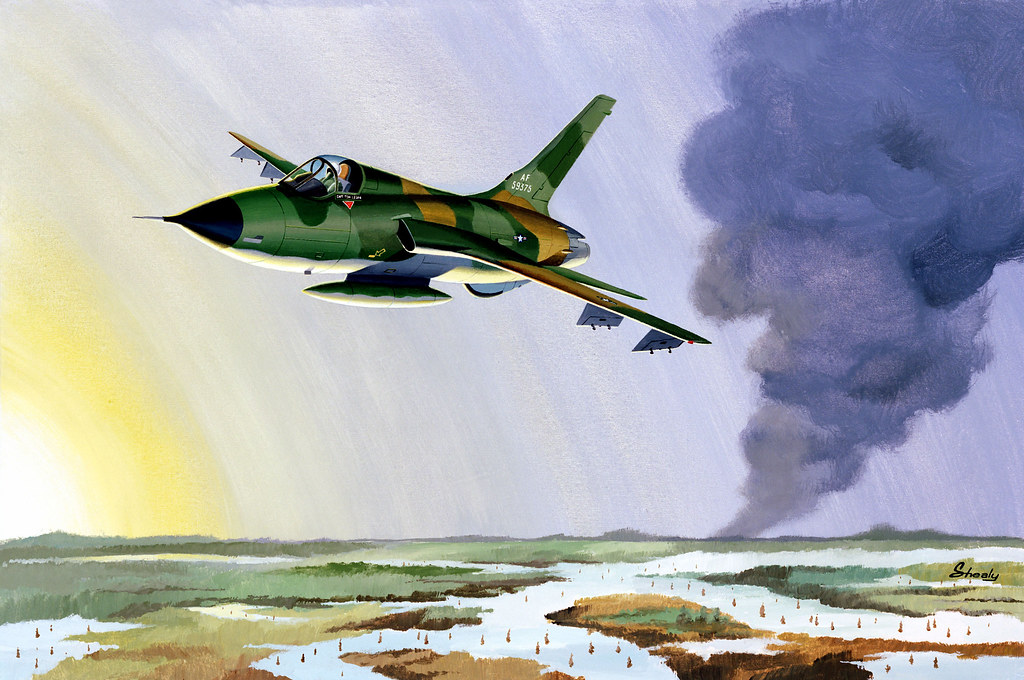
7. **The Propaganda Battleground: Prisoners as Political Tools** The treatment and perception of prisoners of war during the Vietnam War transcended humanitarian concerns, becoming a potent weapon in a broader conflict fought as much for “hearts and minds” as for territory. For North Vietnam, American POWs were valuable assets, used to undermine support for the war back in the United States. They paraded captives to demonstrate supposedly good treatment or, conversely, forced them to confess to war crimes they had not committed, aiming to discredit the American intervention.
On the American side, President Richard M. Nixon made the return of POWs a paramount priority, even linking continued fighting to achieving this goal. While presented as a humanitarian imperative, critics, such as historian Jon M. Van Dyke, suggested in 1971 that this focus was a “manipulative move to drag out the conflict and ‘revive sagging emotional support for the war.’” Both sides were keenly aware of the power of the POW narrative to influence public opinion domestically and internationally.
As Hoa Lo’s warden, Tran Trong Duyet was directly tasked with managing this delicate political dimension. His responsibilities included keeping prisoner resistance from escalating into riots and suppressing any actions that might sour public relations. The international scrutiny surrounding prisoner treatment exerted pressure on Vietnam to project an improved image, leading to carefully orchestrated events designed to showcase perceived benevolence.
A notable instance of this was Duyet’s decision to allow the singer and antiwar activist Joan Baez into Hoa Lo during American bombing raids in December 1972. This move was most likely an effort to contrast the American attack on civilians with Vietnam’s purported humane treatment of prisoners. The results, however, were mixed; a photograph captured an awkward moment with Ms. Baez and three emotionless American captives in striped prison garb, highlighting the complex and often strained attempts at propaganda amidst the grim realities of war.”
Military equipment: Psychological warfare
Categories: Aggression, All articles with unsourced statements, Articles containing German-language text, Articles with Project Gutenberg links, Articles with short description
Summary: Psychological warfare (PSYWAR), or the basic aspects of modern psychological operations (PSYOP), has been known by many other names or terms, including Military Information Support Operations (MISO), psyops, political warfare, “Hearts and Minds”, and propaganda. The term is used “to denote any action which is practiced mainly by psychological methods with the aim of evoking a planned psychological reaction in other people”.
Various techniques are used, and are aimed at influencing a target audience’s value system, belief system, emotions, motives, reasoning, or behavior. It is used to induce confessions or reinforce attitudes and behaviors favorable to the originator’s objectives, and are sometimes combined with black operations or false flag tactics. It is also used to destroy the morale of enemies through tactics that aim to depress troops’ psychological states.
Target audiences can be governments, organizations, groups, and individuals, and is not just limited to soldiers. Civilians of foreign territories can also be targeted by technology and media so as to cause an effect on the government of their country.
Stories are said to be a key factor in a successful operation. Mass communication such as radio allows for direct communication with an enemy populace, and therefore has been used in many efforts. Social media channels and the internet allow for campaigns of disinformation and misinformation performed by agents anywhere in the world.
Get more information about: Psychological warfare

8. **The Broader Propaganda Campaign: Shaping Perceptions and Public Opinion**The conflict in Vietnam was fought not only on battlefields but also in the realm of public perception, with both sides acutely aware of the power of narrative. For North Vietnam, American prisoners of war served as invaluable tools in this struggle, their images and perceived treatment carefully managed to influence international opinion and sow dissent within the United States. The objective was to frame the narrative, either by showcasing humane conditions to counter accusations of brutality or by leveraging confessions to discredit the American war effort, a sophisticated campaign aimed at winning “hearts and minds” far beyond the immediate theater of war.
Tran Trong Duyet, as the chief warden of Hoa Lo, found himself at the nexus of this critical propaganda front. His responsibilities extended beyond mere detainee management to actively curating the prison’s public image, particularly as international scrutiny intensified. He was tasked with preventing prisoner resistance from escalating into public relations nightmares and suppressing any actions that could generate negative publicity, ensuring that carefully arranged events conveyed a message of benevolence despite harsher realities.
One such meticulously managed event involved the visit of the renowned singer and antiwar activist Joan Baez to Hoa Lo during the intense American bombing raids of December 1972. This was a calculated move, seemingly aimed at contrasting American aggression against civilians with North Vietnam’s purported humane treatment of its captives. However, the outcomes were often complex and ambiguous, as evidenced by a photograph capturing an “awkward moment” with Ms. Baez and three “emotionless American captives in striped prison garb,” underscoring the inherent difficulties in manipulating genuine human emotion for propaganda purposes.
Military equipment: Propaganda
Categories: All Wikipedia articles needing clarification, All articles lacking reliable references, All articles needing additional references, Articles containing Latin-language text, Articles containing video clips
Summary: Propaganda is communication that is primarily used to influence or persuade an audience to further an agenda, which may not be objective and may be selectively presenting facts to encourage a particular synthesis or perception, or using loaded language to produce an emotional rather than a rational response to the information that is being presented. Propaganda can be found in a wide variety of different contexts.
Beginning in the twentieth century, the English term propaganda became associated with a manipulative approach, but historically, propaganda had been a neutral descriptive term of any material that promotes certain opinions or ideologies.
A wide range of materials and media are used for conveying propaganda messages, which changed as new technologies were invented, including paintings, cartoons, posters, pamphlets, films, radio shows, TV shows, and websites. More recently, the digital age has given rise to new ways of disseminating propaganda, for example, in computational propaganda, bots and algorithms are used to manipulate public opinion, e.g., by creating fake or biased news to spread it on social media or using chat bots to mimic real people in discussions in social networks.
Get more information about: Propaganda
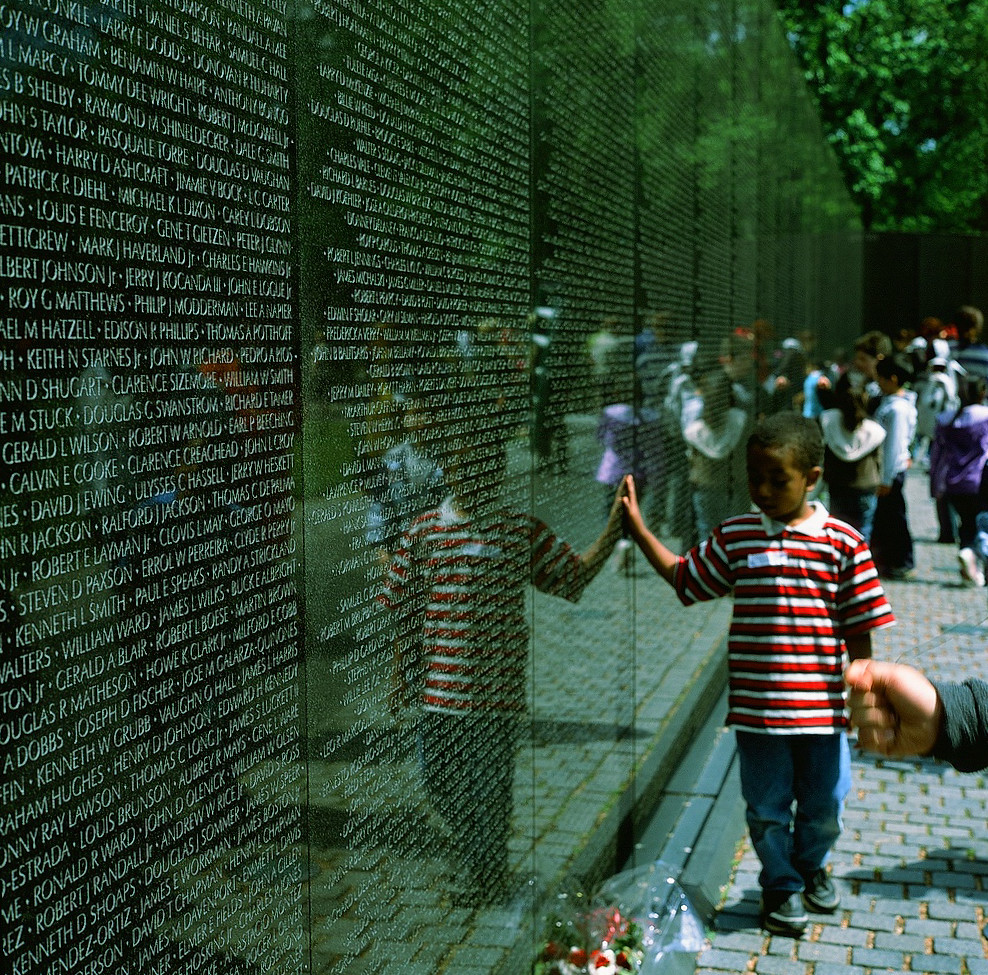
9. **Tran Trong Duyet’s Enduring Government Service and Retirement**Following the tumultuous period of the Vietnam War and the release of American prisoners under the Paris Peace Accords, Tran Trong Duyet’s commitment to his country’s service did not wane. His trajectory, common for many dedicated individuals in Vietnam, seamlessly transitioned from active wartime duties to continued governmental and military roles in the post-conflict era. This demonstrated a deep-seated loyalty and continuous engagement with the national project of reunification and reconstruction.
After the final departure of American prisoners in March 1973, Duyet participated in significant military campaigns that shaped the ultimate outcome of the war, including the Bình Trị Thiên campaign, the Battle of Buôn Ma Thuột, and the climactic campaign for the capture of Saigon. With Vietnam’s reunification, he transitioned into different governmental capacities, serving in the General Political Department and undertaking international assignments in Cambodia, showcasing his adaptability and the breadth of his contributions.
Tran Trong Duyet’s distinguished career culminated in his appointment as Chief of Political Affairs of the Navy General Staff, a significant position he held until his retirement in 1994. His path, from a young revolutionary fighter to a senior political officer, exemplified a life deeply entwined with the history and evolution of modern Vietnam, marking decades of dedicated service to his nation.
Military equipment: Hoa people
Group: Hoa people,Vietnamese Chinese
NativeName: lang
Caption: Ming dynasty
Population: 749,466,0.78% of the Vietnamese population (2019)
Regions: Ho Chi Minh City,Đồng Nai,Sóc Trăng,Kiên Giang,Bạc Liêu,Bình Dương,Đà Nẵng,Bắc Giang,Quảng Ninh
Langs: Vietnamese language,Mandarin Chinese,Teochew dialect,Hakka Chinese,Hokkien,Hainanese,French language
Rels: Mahayana,Shenism in Southeast Asia,Protestantism
RelatedC: San Diu people
Title: Hoa
S: linktext
T: linktext
H: iad^6 nam^2 fa^2 ngin^2
P: Yuènán huárén
J: jyut^6 naam^4 waa^4 jan^4
Y: Yuhtnàahm Wàhyàhn
Poj: O̍at-lâm Hôa-jîn
Qn: người Hoa,người Hán,người Tàu
Chunom: vi-nom,vi-nom
Categories: All articles that may be too long, All articles with incomplete citations, All articles with specifically marked weasel-worded phrases, All articles with unsourced statements, Articles containing Chinese-language text
Summary: The Hoa people, also known as Vietnamese Chinese (Vietnamese: Người Hoa, Chinese: 華人; pinyin: Huárén; Cantonese Yale: Wàhyàhn or Chinese: 唐人; Jyutping: tong4 jan4; Cantonese Yale: Tòhngyàhn), are an ethnic minority in Vietnam composed of citizens and nationals of full or partial Han Chinese ancestry. The term primarily refers to ethnic Chinese who migrated from southern Chinese provinces to Vietnam during the 18th century, although Chinese migration to the region dates back millennia. While millions of Vietnamese may trace distant Chinese lineage due to centuries of Vietnam under Chinese rule, the Hoa are defined by their continued identification with Chinese language, culture and community. They remain closely connected to broader Han Chinese identity. “Chinese-Vietnamese” usually refers to these individuals, in contrast to those who have assimilated into Vietnamese society and are no longer regarded as culturally Chinese.
The Hoa have historically maintained a prominent role in Vietnam’s commercial and urban life. Under French Indochina, colonial authorities often favoured the Hoa for their commercial acumen. From the late 19th century to the early 1970s, the Hoa dominated the private sector, with estimates attributing 70 to 80 percent of pre-1975 Saigon’s privately owned businesses to them. After 1975, the Vietnamese Communist Party (VCP) seized power and targeted many Hoa businesses and properties for confiscation. Hoa individuals were accused of political disloyalty and collaboration with colonial powers. The situation worsened during the Sino-Vietnamese War, prompting a mass exodus of Hoa as boat people fleeing persecution.
Vietnam’s adoption of economic liberalisation from 1988 gradually allowed the Hoa to reestablish a presence in the business sector. Although their influence today is not as pronounced as before 1975, the Hoa remain a commercially resilient group within a diversified Vietnamese economy now open to foreign corporations and global competition. The Hoa continue to embody a distinctly Chinese identity within Vietnam, maintaining cultural traditions and community structures that separate them from assimilated individuals of Chinese ancestry who now identify solely as Vietnamese.
Get more information about: Hoa people

10. **From Adversary to Advocate: Duyet’s Post-War Shift Towards Reconciliation**In the decades following the cessation of hostilities, Tran Trong Duyet’s personal narrative evolved, transforming him from a wartime adversary into a surprising proponent of reconciliation between Vietnam and the United States. This shift was not merely passive but an active embrace of a future built on mutual understanding and cooperation, reflecting a deep conviction that former enemies could indeed become partners for the benefit of both nations.
One of the most striking manifestations of this evolution was Duyet’s unexpected public endorsement of John McCain’s presidential bid in 2008. To the astonishment of many, he shouted “John McCain! My friend! Victory!” to a reporter. He recounted lively, yet respectful, debates with McCain during captivity, describing them as discussions “between two men in a manly style,” emphasizing that there was “never any personal prejudice,” suggesting a degree of shared respect that transcended their adversarial roles.
Duyet often used his personal experiences to advocate for improved relations, seeking to remind family, friends, and officials that adversaries could transform into partners. His daughter, Tran Hai Yen, observed that John McCain was among those her father “talked about most” and “who left one of the strongest impressions on him from his years at Hoa Lo.” This commitment to reconciliation extended to a broader vision for his country’s international standing, as he expressed genuine sorrow upon McCain’s death, viewing it as a loss for both the U.S. and Vietnam, recognizing McCain’s pivotal role in fostering rapprochement.
Military equipment: F-5 Tigershark
Contractor: Northrop Grumman.
Service: United States Navy
Date Deployed: F-5N First flight: March 2003; F-5F First Flight: September 1974.
Propulsion: (2) J85-GE-21C turbojet engines each producing 5,000 pounds (2,273 kg) of thrust.
Range: Maximum: 2,314 miles
Crew: F-5N: 1; F-5F: 2
Armament: AIM-9 Sidewinder missiles on wingtip launchers.
Categories: Fighter Aircraft, Military Aircraft, Navy Aircraft, Navy Equipment, Navy Fighters
Get more information about: F-5 Tigershark
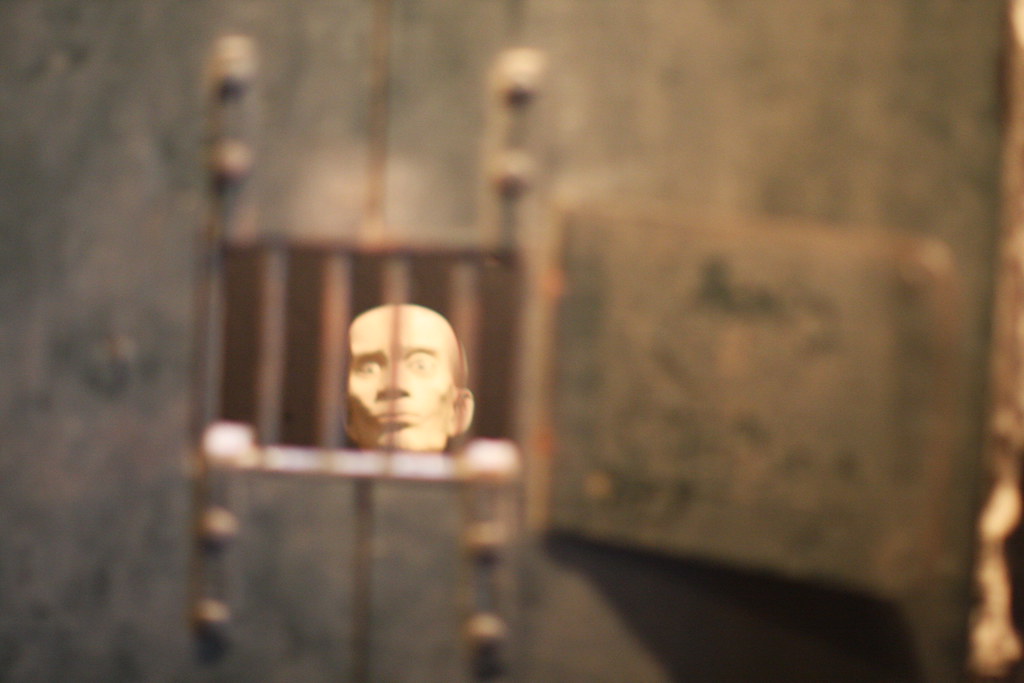
11. **John McCain’s Enduring Legacy: The Shaping Power of Hoa Lo**John McCain’s harrowing five-and-a-half-year ordeal at Hoa Lo Prison transcended a mere chapter in his biography; it became a foundational experience that indelibly shaped his character, political philosophy, and public persona. The physical and psychological scars he bore—including the inability to raise his arms above his head and a slight limp—served as constant, tangible reminders of his immense suffering. These injuries were not just personal burdens but visible symbols of his sacrifice, profoundly influencing his later career and his moral compass.
The “Hanoi Hilton” experience also posed profound ethical dilemmas. McCain’s personal exposure to “enhanced interrogation techniques” under the North Vietnamese profoundly informed his later political stances. As a Senator, he became one of the most vocal and principled opponents of practices like waterboarding, drawing directly from his own experience of torture. His advocacy was rooted in a deep understanding of their destructive impact on human dignity and their ineffectiveness in eliciting truthful information, a testament to the enduring lessons learned within Hoa Lo’s walls.
Furthermore, his unwavering defiance—famously refusing early release to avoid giving the enemy a propaganda coup—cemented his image as a man of integrity and honor. This act of profound self-sacrifice and loyalty to his fellow prisoners resonated deeply with the American public, defining him as a war hero long before he entered politics. The narrative of his resistance, stubbornness, and unwavering stance contributed significantly to his unique political identity, making the experiences from Hoa Lo inseparable from the name “John McCain.”
Military equipment: Deaths in October 2021
Categories: 2021 deaths, Articles with Arabic-language sources (ar), Articles with Bulgarian-language sources (bg), Articles with Catalan-language sources (ca), Articles with Chinese-language sources (zh)
Get more information about: Deaths in October 2021
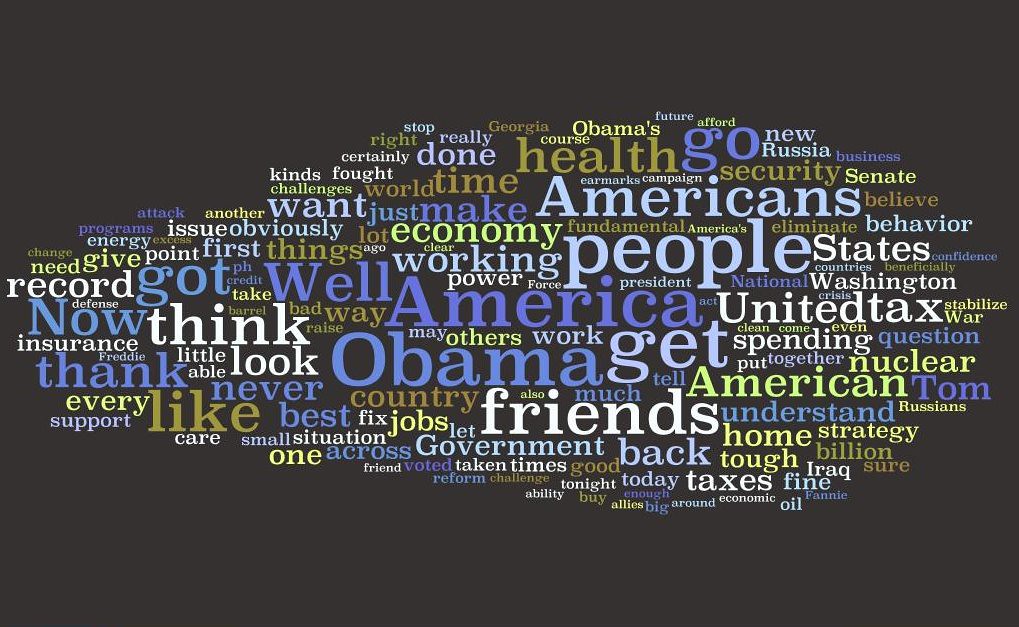
12. **John McCain’s Pivotal Role in Normalizing U.S.-Vietnam Relations**Beyond his personal ordeal, John McCain played an indispensable and arguably singular role in fostering the normalization of diplomatic relations between the United States and Vietnam. In the half-century following the war, these two once-hostile nations remarkably transitioned into close allies, a transformation significantly propelled by McCain’s consistent and principled advocacy. His ability to transcend personal grievances and champion a forward-looking vision for the relationship was instrumental in healing deep-seated wounds and establishing a new era of cooperation.
McCain’s commitment to reconciliation was not merely rhetorical but deeply practical, influencing legislative efforts and public discourse. In 1995, when diplomatic ties between the two countries were finally restored, McCain unequivocally declared that the United States had “looked back in anger at Vietnam for too long.” He powerfully articulated his duty, stating, “I cannot allow whatever resentments I incurred during my time in Vietnam to hold me from doing what is so clearly my duty.” This courageous stance, coming from a man who had suffered so profoundly, lent immense moral authority to the cause of normalization.
His leadership, alongside figures like Senator John Kerry, was crucial in advocating for the restoration of diplomatic relations. They understood the strategic importance of forging new ties and moving past the bitterness of the war, prioritizing future benefits over past grievances. This forward-looking perspective was a powerful force in changing American policy and public opinion. Even Tran Trong Duyet himself acknowledged McCain’s contributions, stating that he and Senator Kerry “greatly contributed to promote Vietnam-U.S. relations,” highlighting the extraordinary nature of McCain’s diplomatic achievements.
Military equipment: Vietnam War POW/MIA issue
Categories: Aftermath of the Vietnam War, All articles with deprecated sources, All articles with unsourced statements, American prisoners of war, American prisoners of war in the Vietnam War
Summary: The Vietnam War POW/MIA issue concerns the fate of United States servicemen who were reported as missing in action (MIA) during the Vietnam War and associated theaters of operation in Southeast Asia.
Following the Paris Peace Accords of 1973, 591 U.S. prisoners of war (POWs) were returned during Operation Homecoming. Many of those missing were airmen who were shot down over North Vietnam or Laos. Investigations of these incidents have involved determining whether the men involved survived being shot down; if they did not, the U.S. government made efforts to recover their remains. Progress in resolving these cases was slow until the mid-1980s, when relations between the United States and Vietnam began to improve and more cooperative efforts were undertaken. Normalization of the U.S. relations with Vietnam in the mid-1990s was a culmination of this process.
Considerable speculation and investigation have been devoted to a hypothesis that a significant number of missing U.S. service members from the Vietnam War were captured as prisoners of war by communist forces and kept as live prisoners after U.S. involvement in the war concluded in 1973. A vocal group of POW/MIA activists has maintained that there has been a concerted conspiracy by the Vietnamese and U.S. governments since then to hide the existence of these prisoners. The U.S. government has steadfastly denied that prisoners were left behind or that any effort has been made to cover up their existence. Popular culture has reflected the “live prisoners” theory, such as in the 1985 film Rambo: First Blood Part II. Several congressional investigations have looked into the issue, culminating with the largest and most thorough, the United States Senate Select Committee on POW/MIA Affairs of 1991–93, which found “no compelling evidence that proves that any American remains alive in captivity in Southeast Asia.”
The fate of those missing in action has always troubled belligerent nations as a consequence of any war. In this case, the issue has a strong emotional charge to those involved, fuelling intense debate.
Get more information about: Vietnam War POW/MIA issue
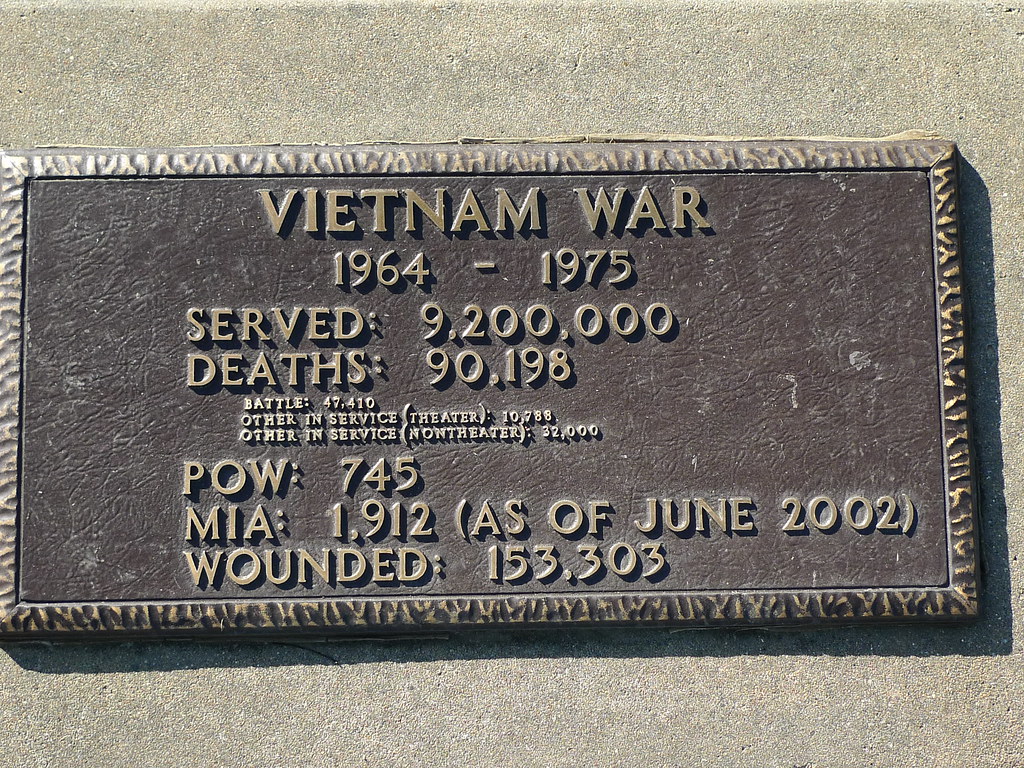
13. **Reconnecting with the Past: McCain’s Return Visits to Vietnam**John McCain’s journey of reconciliation was not confined to policy debates in Washington; it extended to deeply symbolic return visits to Vietnam, journeys that underscored his personal commitment to healing and forging new bonds. These trips, undertaken several times after the restoration of diplomatic ties in 1995, were more than mere diplomatic engagements; they were powerful acts of remembrance and bridge-building, showcasing his capacity to revisit places of immense suffering with a spirit of forgiveness.
One of the most poignant moments of these return visits was his emotional reunion with another former jailer at the very site of his captivity—the ‘Hanoi Hilton,’ now a popular tourist attraction. While the context specifies “another former jailor,” the mere act of returning to Hoa Lo and engaging with those who once held him captive was a profound testament to his lack of “anger nor rancor,” as he articulated during a visit in 2000. He famously stated, “I’m a better man for my experience and I’m grateful for having the opportunity of serving,” a sentiment that encapsulated his transformative outlook.
These visits served a broader public purpose. By returning to the country, and even to the prison, McCain publicly demonstrated a path forward for both nations, showing that it was possible to acknowledge past traumas while simultaneously building a shared future. His openness towards Vietnam and his willingness to engage with his experiences there “certainly helped heal a lot of wounds,” as author Alvin Townley observed. Even Tran Trong Duyet, though he never had the chance to reconnect with McCain, imagined what he would say: “I would greet him… as two veterans… meeting again in the spirit of reconciliation.”
Military equipment: 2019 North Korea–United States Hanoi Summit
Name: 2019 North Korea–United States Hanoi Summit
OtherTitles: Hanoi Summit
Logo: File:DPRK–USA Hanoi Summit (US logo).jpg,Logo used by the United States,File:Official Logo of DPRK-USA Hanoi Summit-Vietnam-2019.jpg,Logo used by Vietnam
Caption: Donald Trump
Country: Flag
Date: February 27–28, 2019
Venues: Sofitel Legend Metropole Hanoi,Hanoi
Participants: flagicon,Kim Jong Un
Follows: 2018 North Korea–United States Singapore Summit
Precedes: 2019 Koreas–United States DMZ Summit
Website: https://dprk-usasummit2019.mofa.gov.vn,[object Object]
Title: 2019 North Korea–United States Hanoi Summit
Nkhangul: 조미 2차 수뇌상봉
Nkhanja: 朝美 二次 首腦相逢
Nkrr: Jomi icha sunoesangbong
Nkmr: Chomi ich’a sunoesangbong
Skhangul: 북미 2차 정상회담
Skhanja: 北美 二次 頂上會談
Skrr: Bungmi icha jeongsanghoedam
Skmr: Pungmi ich’a chŏngsanghoedam
IboxOrder: ko3,ko4
Categories: 2019 conferences, 2019 in American politics, 2019 in North Korea, 2019 in Vietnam, 2019 in international relations
Summary: The 2019 North Korea–United States Hanoi Summit, commonly known as the Hanoi Summit, was a two-day summit meeting between North Korean supreme leader Kim Jong Un and U.S. president Donald Trump, held at the French Colonial Hôtel Métropole in Hanoi, Vietnam, from February 27 to 28, 2019. It was the second meeting between the leaders of North Korea and the United States following their first meeting in Singapore the year prior.
On February 28, 2019, the White House announced that the summit was cut short and that no agreement was reached. Trump later clarified that it was due to North Korea’s request to end all sanctions. North Korean foreign minister Ri Yong-ho asserted that the country only sought a partial lifting of the five United Nations sanctions placed on North Korea between 2016 and 2017.
Get more information about: 2019 North Korea–United States Hanoi Summit

14. **The ‘Hanoi Hilton’ Today: A Museum of Contested Memory**The infamous Hoa Lo Prison, once a chilling symbol of wartime suffering and a “hellhole” in John McCain’s recollection, stands today transformed into one of Hanoi’s most popular tourist spots. Its current incarnation as a museum, however, is not a monolithic memorial but a complex tapestry of contested memory, presenting a carefully curated narrative that often diverges sharply from the experiences recounted by American prisoners of war. This site embodies the ongoing struggle to reconcile disparate historical truths and nationalist perspectives.
Within the museum’s walls, visitors encounter artifacts and exhibits that, while acknowledging the prison’s history as a French colonial jail, largely emphasize the humane treatment of American POWs. Displays frequently showcase images that Tran Trong Duyet often cited as evidence: photographs of American prisoners playing basketball in the prison yard or sharing meals with their captors. These selective portrayals contribute to a narrative that aims to present North Vietnam’s conduct during the war in a positive light, reinforcing Duyet’s consistent denials of torture.
However, the museum’s narrative often sidesteps or downplays the extensive testimonies of American POWs who detailed systematic beatings, starvation, and prolonged solitary confinement. This omission underscores the “competing traumas of war and nationalist narratives” that continue to blur the understanding of what truly transpired within its confines. For visitors unaware of the full spectrum of experiences, the museum can offer a one-sided historical account, making it a powerful, albeit partial, symbol of Vietnam’s official memory of the conflict, and a site of both education and ongoing debate.
Military equipment: Vietnam
ConventionalLongName: Socialist Republic of Vietnam
CommonName: Vietnam
NativeName: native name
SymbolType: Emblem
NationalMotto: native phrase
Englishmotto: “Independence – Freedom – Happiness”
NationalAnthem: lang
MapCaption: map caption
Capital: Hanoi
Coordinates: 21|2|N|105|51|E|type:city
LargestSettlement: Ho Chi Minh City,10|48|N|106|39|E|type:city
LargestSettlementType: normal
AdminCenterType: normal
AdminCenter: Da Nang,16|20|N|107|35|E|type:city
LanguagesType: Official language
Languages: Vietnamese language
EthnicGroups: vunblist
EthnicGroupsYear: 2019
Religion: item_style=white-space:nowrap;,Irreligion,Catholic Church in Vietnam,Buddhism in Vietnam,Hòa Hảo,Protestantism in Vietnam,Caodaism,Islam,Religion in Vietnam
ReligionYear: 2019
Demonym: Vietnamese people
GovernmentType: Marxist–Leninist
LeaderTitle1: General Secretary of the Communist Party of Vietnam
LeaderName1: Tô Lâm
LeaderTitle2: President of Vietnam
LeaderName2: Lương Cường
LeaderTitle3: Prime Minister of Vietnam
LeaderName3: Phạm Minh Chính
LeaderTitle4: Chairman of the National Assembly of Vietnam
LeaderName4: Trần Thanh Mẫn
Legislature: National Assembly of Vietnam
SovereigntyType: History of Vietnam
EstablishedEvent1: Văn Lang
EstablishedDate1: 7th century BC
EstablishedEvent2: Âu Lạc
EstablishedDate2: 3rd century BC
EstablishedEvent3: Han conquest of Nanyue
EstablishedDate3: 111 BC
EstablishedEvent4: Ngô dynasty
EstablishedDate4: Thu Jan 01 0939 00:00:00 GMT-0752 (Pacific Standard Time)
EstablishedEvent5: Lê dynasty
EstablishedDate5: Mon Dec 31 1427 16:07:02 GMT-0752 (Pacific Standard Time)
EstablishedEvent6: Nguyễn dynasty
EstablishedDate6: Thu Dec 31 1801 16:07:02 GMT-0752 (Pacific Standard Time)
EstablishedEvent7: Treaty of Huế (1883)
EstablishedDate7: Sat Aug 25 1883 00:00:00 GMT-0752 (Pacific Daylight Time)
EstablishedEvent8: Declaration of Independence of the Democratic Republic of Vietnam
EstablishedDate8: Sun Sep 02 1945 00:00:00 GMT-0700 (Pacific Daylight Time)
EstablishedEvent9: 1954 Geneva Conference
EstablishedDate9: Wed Jul 21 1954 00:00:00 GMT-0700 (Pacific Daylight Time)
EstablishedEvent10: Fall of Saigon
EstablishedDate10: Wed Apr 30 1975 00:00:00 GMT-0700 (Pacific Daylight Time)
EstablishedEvent11: National Assembly of Vietnam#Since 1976
EstablishedDate11: Fri Jul 02 1976 00:00:00 GMT-0700 (Pacific Daylight Time)
EstablishedEvent12: lang
EstablishedDate12: Thu Dec 18 1986 00:00:00 GMT-0800 (Pacific Standard Time)
EstablishedEvent13: Constitution of Vietnam#Current constitution
EstablishedDate13: Thu Nov 28 2013 00:00:00 GMT-0800 (Pacific Standard Time)
AreaKm2: 331,344.82
AreaRank: 66th
PercentWater: 6.38
PopulationEstimate: 100300000
PopulationEstimateYear: 2023
PopulationEstimateRank: 15
PopulationCensus: 96208984
PopulationCensusYear: 2019
PopulationDensityKm2: 298
PopulationDensitySqMi: 770
PopulationDensityRank: 49
GdpPpp: increase $1.786 trillion
GdpPppYear: 2025
GdpPppRank: 23rd
GdpPppPerCapita: increase $17,484
GdpPppPerCapitaRank: 104th
GdpNominal: increase $490.970 billion
GdpNominalYear: 2025
GdpNominalRank: 33rd
GdpNominalPerCapita: increase $4,806
GdpNominalPerCapitaRank: 119th
Gini: 36.1
GiniYear: 2022
GiniChange: decrease
Hdi: 0.766
HdiYear: 2023
HdiChange: increase
HdiRank: 93rd
Currency: Vietnamese đồng
CurrencyCode: VND
TimeZone: UTC+07:00
UtcOffset: +07:00
DrivesOn: right
CallingCode: Telephone numbers in Vietnam
Cctld: .vn
Categories: 1976 establishments in Vietnam, All articles containing potentially dated statements, All articles with dead external links, All articles with vague or ambiguous time, All pages needing factual verification
Summary: Vietnam, officially the Socialist Republic of Vietnam (SRV), is a country at the eastern edge of Mainland Southeast Asia. With an area of about 331,000 square kilometres (128,000 sq mi) and a population of over 100 million, it is the world’s 15th-most populous country. One of two communist states in Southeast Asia, Vietnam is bordered by China to the north, Laos and Cambodia to the west, the Gulf of Thailand to the southwest, and the South China Sea to the east; it also shares maritime borders with Thailand, Malaysia, and Indonesia to the south and southwest, the Philippines to the east, and China to the northeast. Its capital is Hanoi, while its largest city is Ho Chi Minh City.
Vietnam was inhabited by the Paleolithic age, with states established in the first millennium BC on the Red River Delta in modern-day northern Vietnam. The Han dynasty annexed northern and central Vietnam, which were subsequently under Chinese rule from 111 BC until the first dynasty emerged in 939. Successive monarchical dynasties absorbed Chinese influences through Confucianism and Buddhism, and expanded southward to the Mekong Delta, conquering Champa. During most of the 17th and 18th centuries, Vietnam was effectively divided into two domains of Đàng Trong and Đàng Ngoài. The Nguyễn—the last imperial dynasty—surrendered to France in 1883. In 1887, its territory was integrated into French Indochina as three separate regions. In the immediate aftermath of World War II, the Viet Minh, a coalition front led by the communist revolutionary Ho Chi Minh, launched the August Revolution and declared Vietnam’s independence from the Empire of Japan in 1945.
Vietnam went through prolonged warfare in the 20th century. After World War II, France returned to reclaim colonial power in the First Indochina War, from which Vietnam emerged victorious in 1954. As a result of the treaties signed between the Viet Minh and France, Vietnam was also separated into two parts. The Vietnam War began shortly after, between the communist North Vietnam, supported by the Soviet Union and China, and the anti-communist South Vietnam, supported by the United States. Upon the North Vietnamese victory in 1975, Vietnam reunified as a unitary communist state that self-designated as a socialist state under the Communist Party of Vietnam (CPV) in 1976. An ineffective planned economy, a trade embargo by the West, and wars with Cambodia and China crippled the country further. In 1986, the CPV launched economic and political reforms similar to the Chinese economic reform, transforming the country to a socialist-oriented market economy. The reforms facilitated Vietnamese reintegration into the global economy and politics.
Vietnam is a developing country with a lower-middle-income economy. It has high levels of corruption, censorship, environmental issues and a poor human rights record. It is part of international and intergovernmental institutions including the ASEAN, the APEC, the Non-Aligned Movement, the OIF, and the WTO. It has assumed a seat on the United Nations Security Council twice.
Get more information about: Vietnam

15. **The Enduring Legacy: Reconciliation, Remembrance, and a Shared Future**The lives of Tran Trong Duyet and John McCain, though once adversaries under the most brutal conditions, ultimately became intertwined in a narrative that transcends individual animosity, culminating in a shared, albeit complex, legacy of reconciliation and remembrance. Their story, punctuated by the enduring symbol of the ‘Hanoi Hilton,’ illustrates the profound human capacity to move beyond conflict and build bridges, even across the deepest divides forged by war. Duyet’s later advocacy for friendship and McCain’s tireless efforts for normalization stand as testaments to this extraordinary trajectory.
The ongoing debate surrounding Hoa Lo Prison, and the conflicting accounts of prisoner treatment, serves as a poignant reminder that historical memory is rarely singular or easily resolved. It remains a space where “competing traumas of war and nationalist narratives” continue to vie for prominence, challenging simplistic interpretations and demanding a nuanced understanding of a complex past. This contestation is not a failure of reconciliation but rather an integral part of the healing process, acknowledging the different perspectives that contribute to a richer, if more uncomfortable, historical truth.
Military equipment: Bloodlands
Name: Bloodlands:,Europe Between Hitler and Stalin
Author: Timothy Snyder
Language: English
Subject: Mass murder
Genre: History
Publisher: Basic Books
PubDate: Thu Oct 28 2010 00:00:00 GMT-0700 (Pacific Daylight Time)
Pages: 544
Isbn: 978-0-465-00239-9
Categories: 2010 non-fiction books, 21st-century history books, Articles with short description, Basic Books books, Books about Joseph Stalin
Summary: Bloodlands: Europe Between Hitler and Stalin is a 2010 book by Yale historian Timothy Snyder. It is about mass murders committed before and during World War II in territories controlled by Nazi Germany and the Soviet Union.
In this book, Snyder examines the political, cultural, and ideological context tied to a specific region of Central and Eastern Europe, where Joseph Stalin’s Soviet Union and Adolf Hitler’s Nazi Germany committed mass murders of an estimated 14 million noncombatants between 1933 and 1945, the majority outside the death camps of the Holocaust. Snyder’s thesis delineates the “bloodlands” as a region that now comprises Poland, Belarus, Ukraine, the Baltic states (Estonia, Latvia, and Lithuania), northeastern Romania, and the westernmost fringes of Russia; in this region, Stalin and Hitler’s regimes, despite their conflicting goals, interacted to increase suffering and bloodshed beyond what each regime would have inflicted independently.
Snyder draws similarities between the two totalitarian regimes and the enabling interactions that reinforced the destruction and suffering that they inflicted upon noncombatants. According to Anne Applebaum, “Snyder’s book has a lot of information that people who know these subjects know very well. But what it does that is different and wholly original is show the ways that Hitler and Stalin echoed one another, at times working together and other times fighting one another. The way in which they egged each other on, acting as two facets of what was really the same phenomenon.”
According to Snyder, “the Germans deliberately killed about 11 million noncombatants, a figure that rises to more than 12 million if foreseeable deaths from deportation, hunger, and sentences in concentration camps are included. For the Soviets during the Stalin period, the analogous figures are approximately 6 million and 9 million.”
The book was awarded numerous prizes, including the 2013 Hannah Arendt Prize for Political Thought, and stirred up a great deal of debate among historians. Reviews ranged from highly critical to “rapturous”.
Get more information about: Bloodlands
Read more about: Beyond the Grave: Sharon Osbourne Reveals Ozzy’s Secret Legacy Amidst Privacy Outrage – A Look at the Prince of Darkness’s Final Journey
Ultimately, the enduring legacy of Duyet, McCain, and the ‘Hanoi Hilton’ is one of hope tempered by the stark realities of war. It highlights the transformation of the U.S.-Vietnam relationship from one of bitter enmity to a partnership built on mutual respect and shared interests. This remarkable evolution, greatly facilitated by figures like John McCain, demonstrates that even the most painful chapters of history can pave the way for a future of collaboration. The commitment to understanding, dialogue, and a shared vision for humanity forms the bedrock upon which genuine reconciliation is built, ensuring that the lessons of the past guide a more peaceful future.


